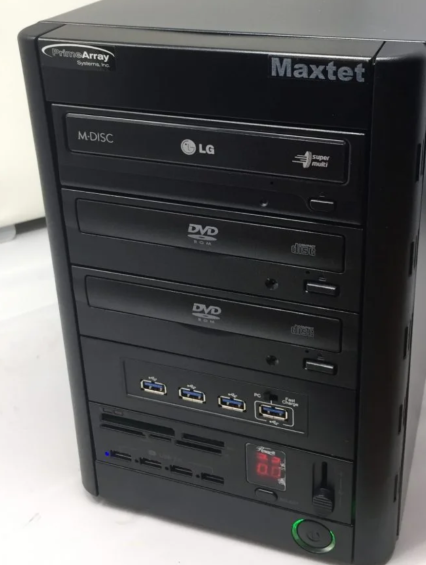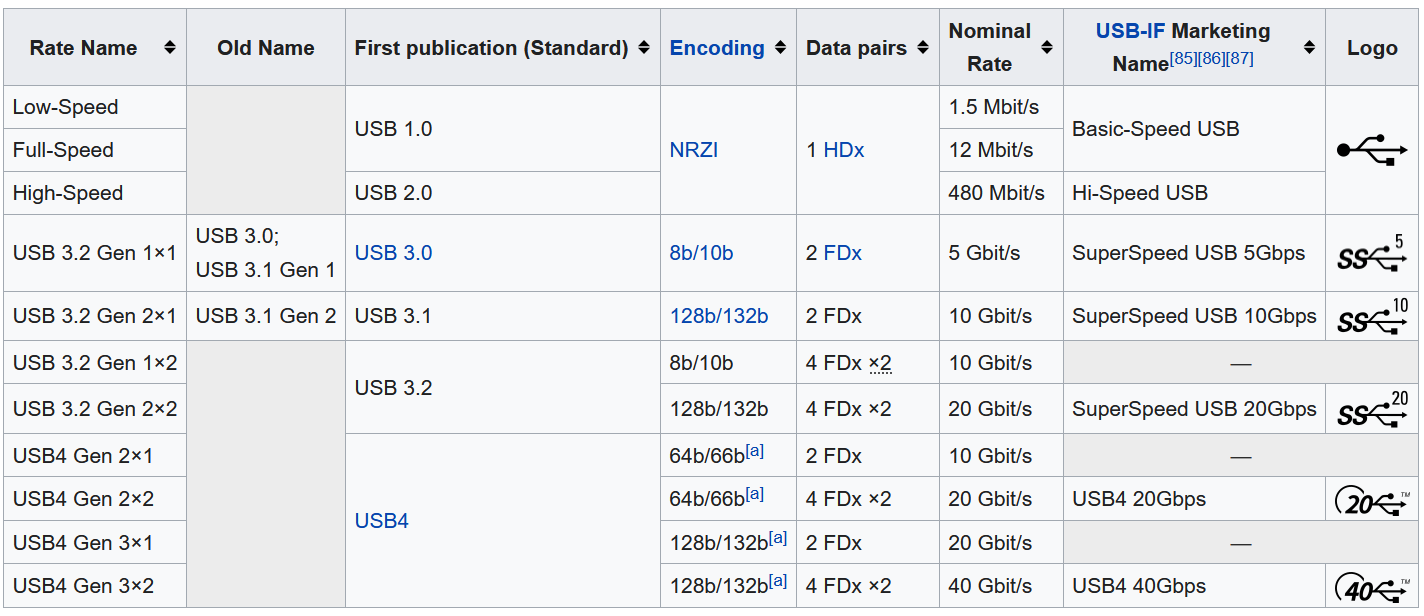USB is the BOSS of all Connectors
Although PrimeArray systems has made devices with many different connectors over the years such as SCSI 1, SCSI 2, SCSI 3, E-SATA, and Firewire, our go-to — the most flexible and widely accepted — is the USB connected device. We couldn’t be happier with this boss connector!
 Pictured above: PrimeArray Maxtet Multimedia Tower
Pictured above: PrimeArray Maxtet Multimedia Tower
Like all technology, USB has evolved over time. Despite being a “Universal” Serial Bus, in its 18+ years it has spawned multiple versions with different connection speeds and many cable types.
Most computers and devices have some form of USB port, and many products ship with a USB cable included. Imagine the chaos if every device had its own unique connector — USB saved us from that!
PrimeArray’s direct-attached devices mainly use USB 3.X, which also supports older versions like USB 2.0. Typically USB 3.0 ports are colored blue but remain backward compatible.
Common USB Cable Types and Their Uses
USB is supposedly universal, but in practice there are many different types. Each serves a function to balance compatibility and support for new devices.
- Type-A: Standard flat, rectangular connector found on computers, TVs, and consoles. Inserts only one way.
- Type-B: Square-shaped, used mainly for printers and older powered devices.
- Mini-USB: Older small connector used in Sony cameras, PS3 controllers, MP3 players.
- Micro-USB: Once standard for phones and tablets, now being replaced by USB-C.
- Type-C: Latest reversible connector, faster and more powerful. Found in MacBooks, Pixel phones, PS5 controllers, etc.
USB Speed Standards
USB has gone through several speed standards. Note: connector shape doesn’t always guarantee the speed.






















































































.webp)
















